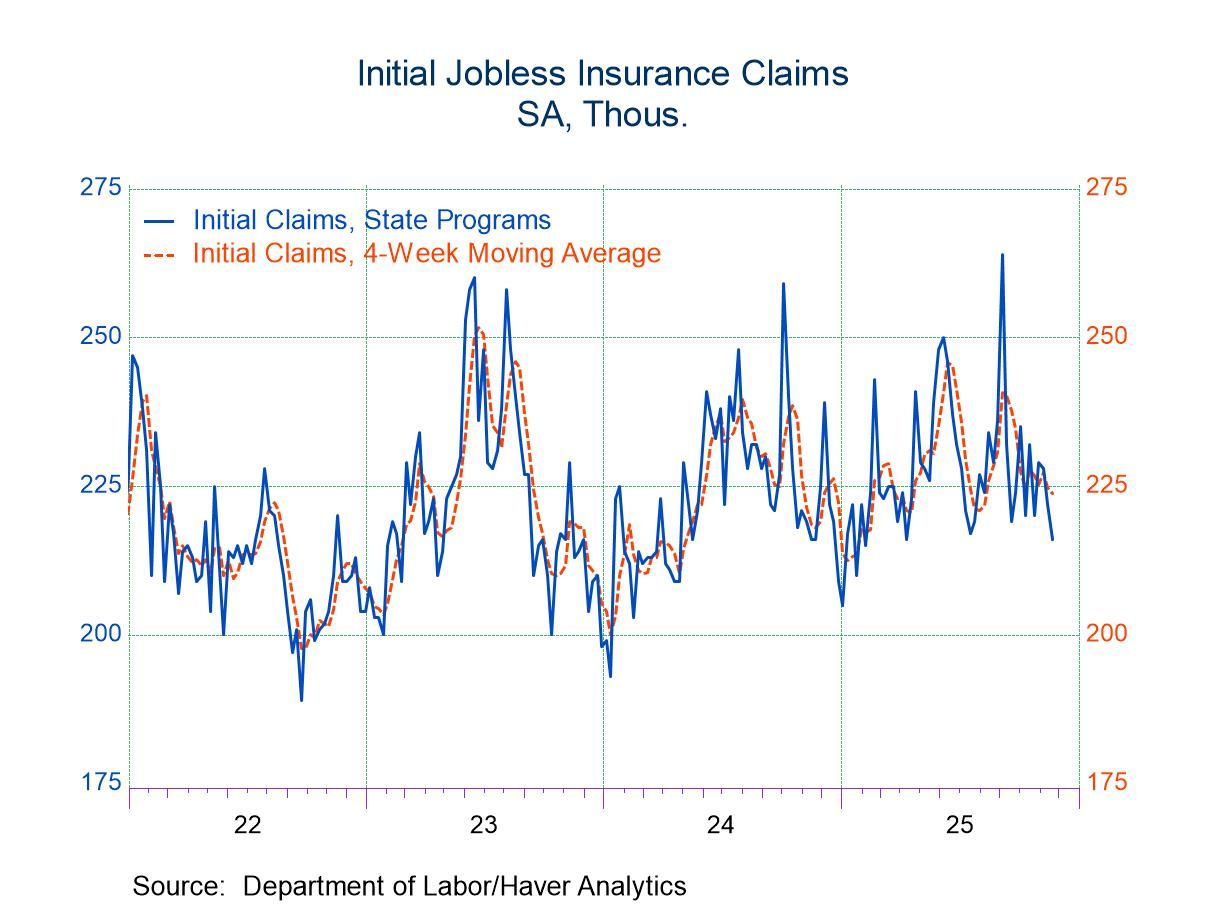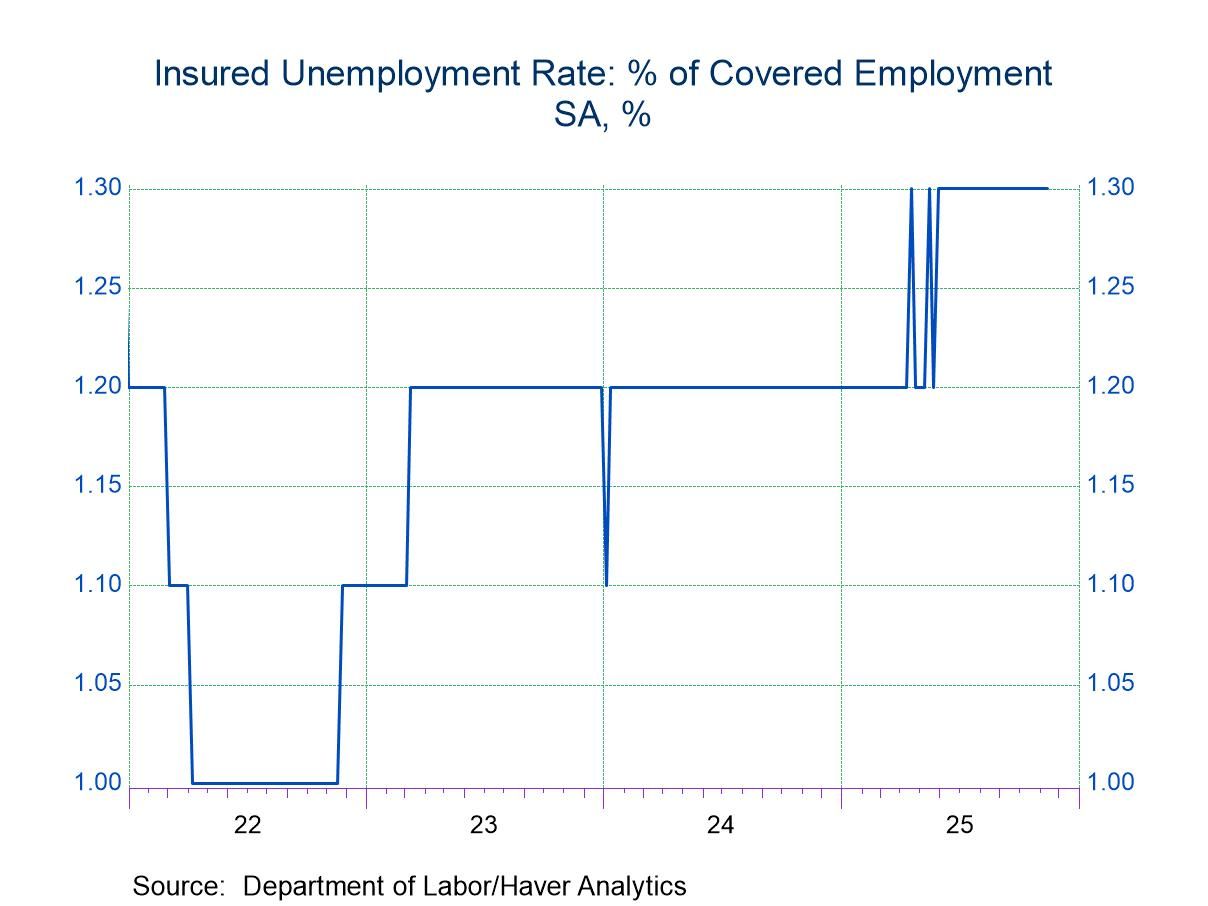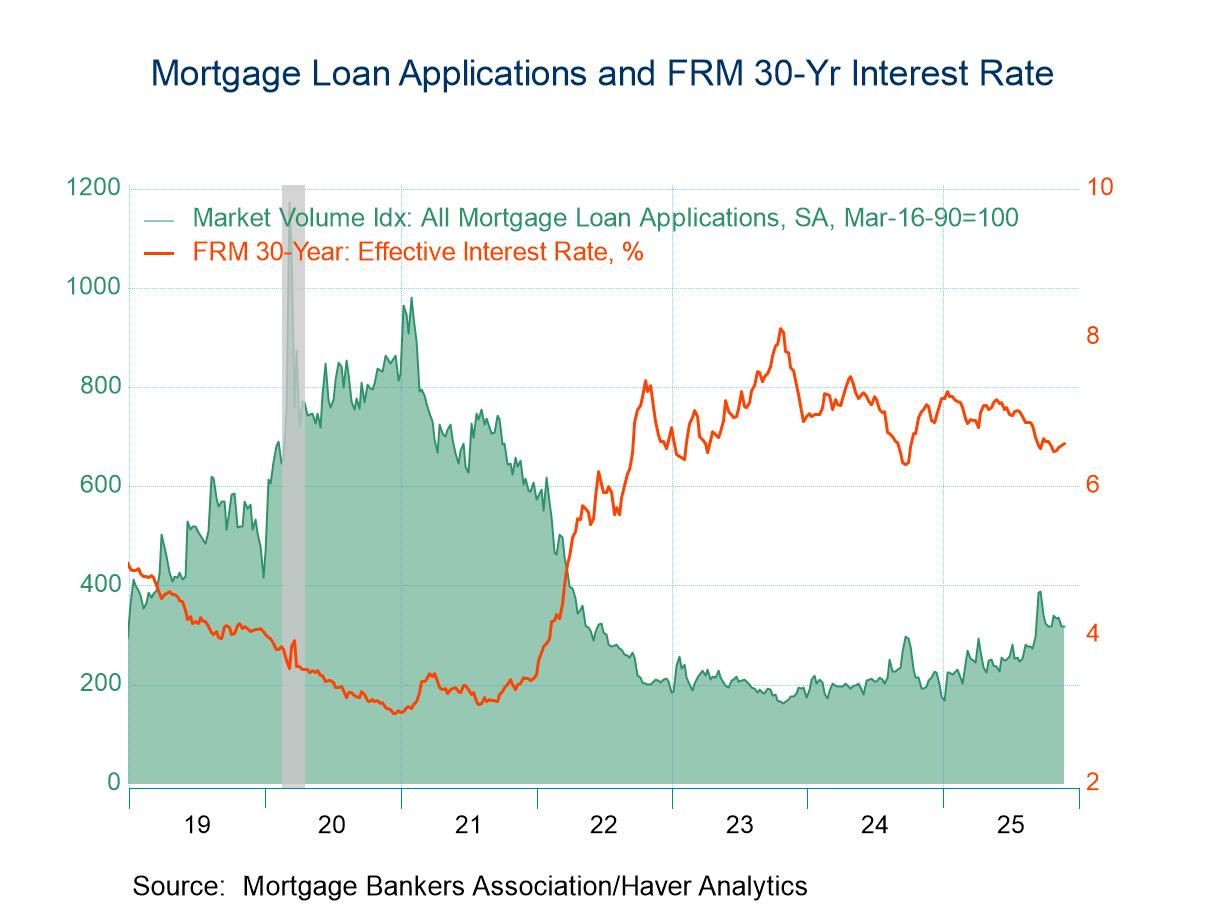U.S. Initial Unemployment Insurance Claims Fell in Latest Week
by:Sandy Batten
|in:Economy in Brief
Summary
- Initial unemployment claims fell to 216,000, the lowest weekly figure since April.
- Continued claims edged up to 1.96 million, indicating that the unemployed are still having increasing difficulty finding a job.


Initial claims for unemployment insurance fell to 216,000 (unchanged y/y) in the week ended November 22 from a slightly upwardly revised 222,000 in the prior week (previously 220,000). This was the lowest weekly reading since April and was tied for the lowest since February. The Action Economics Forecast Survey expected 226,000 initial claims for last week. The four-week moving average of initial claims edged down to 223,750 from 224,750.
Federal government workers filed 1,724 claims in the week ended November 15, the fourth consecutive weekly decline from a recent high of 10,062 in the week of October 18.
Continuing claims (previous claims filers who are still receiving unemployment benefits) continued to edge higher, rising to 1.960 million in the week of November 15 from a downwardly revised 1.953 million in the prior week (previously 1.974 million). While new claims have been well contained recently, continuing claims have risen persistently since midyear, indicating that while the pace of layoffs has not increased meaningfully, hiring has slowed. Consequently, those unemployed are having more difficulty finding new jobs and hence are receiving unemployment benefits for longer, a sign that labor market conditions are softening.
Federal government employees continuing benefits fell to 33,083 in the week of November 8, the first weekly decline since the end of August, from 38,867 in the previous week.
In the week ending November 15, the insured rate of unemployment (the number of beneficiaries as a percent of covered employment) was unchanged at 1.3%. It has been at this rate since the end of May.
The insured unemployment rate varied greatly across individual states and territories. In the week ended November 8, the highest unemployment rates were in New Jersey (2.30%), Washington (2.20%), Massachusetts (1.90%), District of Columbia (1.90%), and California (1.80%). The lowest were in South Dakota (0.30%), Florida (0.30%), North Carolina (0.40%), and Louisiana (0.40%). Rates in other notable states include Pennsylvania (1.40%), Illinois (1.50%), New York (1.60%), Texas (1.10%), Michigan (1.40%) and Ohio (0.80%). These state data are not seasonally adjusted.
Data on weekly unemployment claims are from the Department of Labor itself, not the Bureau of Labor Statistics. They begin in 1967 and are contained in Haver’s WEEKLY database and summarized monthly in USECON. Data for individual states are in REGIONW back to December 1986. The expectations figure is from the Action Economics Forecast Survey in the AS1REPNA database.


Sandy Batten
AuthorMore in Author Profile »Sandy Batten has more than 30 years of experience analyzing industrial economies and financial markets and a wide range of experience across the financial services sector, government, and academia. Before joining Haver Analytics, Sandy was a Vice President and Senior Economist at Citibank; Senior Credit Market Analyst at CDC Investment Management, Managing Director at Bear Stearns, and Executive Director at JPMorgan. In 2008, Sandy was named the most accurate US forecaster by the National Association for Business Economics. He is a member of the New York Forecasters Club, NABE, and the American Economic Association. Prior to his time in the financial services sector, Sandy was a Research Officer at the Federal Reserve Bank of St. Louis, Senior Staff Economist on the President’s Council of Economic Advisors, Deputy Assistant Secretary for Economic Policy at the US Treasury, and Economist at the International Monetary Fund. Sandy has taught economics at St. Louis University, Denison University, and Muskingun College. He has published numerous peer-reviewed articles in a wide range of academic publications. He has a B.A. in economics from the University of Richmond and a M.A. and Ph.D. in economics from The Ohio State University.






